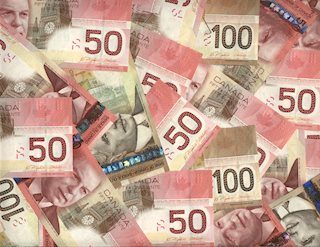USD/CAD moves above 1.3800 as traders expect BoC to deliver a 50 bps rate cut
|
- USD/CAD receives support as BoC is widely expected to reduce interest rates by 50 basis points on Wednesday.
- The commodity-linked CAD faced challenges due to lower crude Oil prices.
- The US Dollar gains ground as the economy's resilience has increased the odds of nominal rate cuts by the Fed.
USD/CAD continues to gain ground as the Canadian Dollar (CAD) receives downward pressure ahead of the Bank of Canada (BoC) interest rate decision scheduled for Wednesday. The USD/CAD pair moves above 1.3800 during Monday’s Asian trading hours.
Decreasing price pressures, combined with a notable decline in labor growth and household spending, have fueled expectations that the Bank of Canada (BoC) will implement a significant interest rate cut of 50 basis points (bps) at its upcoming monetary policy meeting.
Additionally, lower Oil prices have put pressure on the commodity-linked Loonie Dollar as Canada is the largest Oil exporter to the United States (US). Last week, crude Oil prices depreciated by more than 7%, partly due to slowing economic growth in China and easing Middle-East tensions. West Texas Intermediate (WTI) Oil price trades around $69.00 per barrel at the time of writing.
US Dollar (USD) receives support due to fading odds of further aggressive rate cuts by the US Federal Reserve (Fed) in 2024. Last week’s data showed the US economy's resilience, which has strengthened the likelihood of a nominal rate cut by the Federal Reserve (Fed) in November.
According to the CME FedWatch Tool, the probability of a 25-basis-point rate cut in November has risen to 99.3%, up from 89.5% a week earlier.
The monthly US Retail Sales rose by 0.4% in September, surpassing the 0.1% increase recorded in August and the expected gain of 0.3%. Additionally, US Initial Jobless Claims fell by 19,000 during the week ending October 11, the largest decline in three months. The total number of claims dropped to 241,000, significantly below the anticipated 260,000.
Canadian Dollar FAQs
The key factors driving the Canadian Dollar (CAD) are the level of interest rates set by the Bank of Canada (BoC), the price of Oil, Canada’s largest export, the health of its economy, inflation and the Trade Balance, which is the difference between the value of Canada’s exports versus its imports. Other factors include market sentiment – whether investors are taking on more risky assets (risk-on) or seeking safe-havens (risk-off) – with risk-on being CAD-positive. As its largest trading partner, the health of the US economy is also a key factor influencing the Canadian Dollar.
The Bank of Canada (BoC) has a significant influence on the Canadian Dollar by setting the level of interest rates that banks can lend to one another. This influences the level of interest rates for everyone. The main goal of the BoC is to maintain inflation at 1-3% by adjusting interest rates up or down. Relatively higher interest rates tend to be positive for the CAD. The Bank of Canada can also use quantitative easing and tightening to influence credit conditions, with the former CAD-negative and the latter CAD-positive.
The price of Oil is a key factor impacting the value of the Canadian Dollar. Petroleum is Canada’s biggest export, so Oil price tends to have an immediate impact on the CAD value. Generally, if Oil price rises CAD also goes up, as aggregate demand for the currency increases. The opposite is the case if the price of Oil falls. Higher Oil prices also tend to result in a greater likelihood of a positive Trade Balance, which is also supportive of the CAD.
While inflation had always traditionally been thought of as a negative factor for a currency since it lowers the value of money, the opposite has actually been the case in modern times with the relaxation of cross-border capital controls. Higher inflation tends to lead central banks to put up interest rates which attracts more capital inflows from global investors seeking a lucrative place to keep their money. This increases demand for the local currency, which in Canada’s case is the Canadian Dollar.
Macroeconomic data releases gauge the health of the economy and can have an impact on the Canadian Dollar. Indicators such as GDP, Manufacturing and Services PMIs, employment, and consumer sentiment surveys can all influence the direction of the CAD. A strong economy is good for the Canadian Dollar. Not only does it attract more foreign investment but it may encourage the Bank of Canada to put up interest rates, leading to a stronger currency. If economic data is weak, however, the CAD is likely to fall.
Information on these pages contains forward-looking statements that involve risks and uncertainties. Markets and instruments profiled on this page are for informational purposes only and should not in any way come across as a recommendation to buy or sell in these assets. You should do your own thorough research before making any investment decisions. FXStreet does not in any way guarantee that this information is free from mistakes, errors, or material misstatements. It also does not guarantee that this information is of a timely nature. Investing in Open Markets involves a great deal of risk, including the loss of all or a portion of your investment, as well as emotional distress. All risks, losses and costs associated with investing, including total loss of principal, are your responsibility. The views and opinions expressed in this article are those of the authors and do not necessarily reflect the official policy or position of FXStreet nor its advertisers.